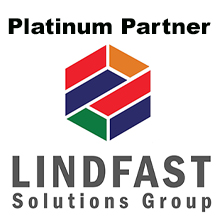- Home
- About Pac-West
- Events
- Fastener Training
- Membership
- Members Only
- Resources
|
Employee Engagement: Lessons from the Pandemic December 2020
Fastener distributors are among countless businesses across the United States facing drastic challenges since the start of the coronavirus pandemic. Managing shifting job responsibilities, monitoring employee workload, and onboarding new workers are just some of the numerous changes facing business owners navigating the realities of a virus reshaping global business. Successful businesses are adapting to succeed in the “new normal” of business life during COVID-19 by embracing virtual meetings, evaluating remote employee motivation, and finding new ways to maintain corporate culture. Here are lessons from three fastener distributors who are thriving during this difficult time. For the Olander Company, the pandemic brought numerous changes. “Working from home has provided opportunities for greater productivity for the self-motivated employees,” notes John Butler, director of new business development. “Tasks are being completed quicker for these employees.” However, not all employees fell into that category, prompting The Olander Company to release personnel that didn’t fit the company culture or became disenchanted with the company’s direction. Luckily, the company found a ready and eager labor pool. “With many workers being furloughed or losing their employment due to business closures, we have taken advantage of the increased number of applicants to find individuals with great skill sets and attributes,” Butler explains. The current business climate has also led to changes with onboarding new personnel. The Olander Company replaced a part-time HR agency with a full-time HR employee who brought “additional knowledge and reduced the overall expense for HR.” Other changes include virtual Zoom meetings that allow the company to know the candidates better, onsite interviews with social distancing, and new documented procedures to complete the process. “The steps vary, from our use of the FTI on-demand training, to ride-alongs with BDMs, working in each department to understand the intricacies/challenges of the different positions.” The evolution in onboarding has stretched the process from two weeks to two months, but Butler is confident the process results in the right people getting hired. In addition, changes in demand brought increased interest in spot buy quoting and VMI opportunities for The Olander Company. “The BDM team is processing a higher amount of quotes this year,” Butler explains. While there is a learning curve for new software and item identification, “taking on quoting is allowing us to process many more requests.” Likewise, the addition of webinars as marketing tools has provided a great way for Olander to show its products and broaden its global reach. Industrial Threaded Products COO Clay Weaver says his company quickly transitioned to remote work with few hitches. Workers were willing to adopt new conditions in the early weeks of the pandemic. “We tried to help staff focus on positive aspects. Everybody kept their jobs. Business was growing. Let’s just be grateful for how fortunate we are.” The problems only started surfacing later. After two months of isolation, the lack of daily office structure lost its allure. “We saw people struggling mentally,” Weaver says. “We had to learn how to reach out and keep employees motivated.” In response, ITP began using Microsoft Teams to hold weekly meetings. The change bolstered morale, allowing the team to refocus on work. “We realized that staff see the situation differently (than management). You focus on what will make them comfortable so you can meet them where they are.” Initially, ITP hoped to bring staff back into the office, but with flu season approaching management decided to continue remote operations for most office workers. Staff responsibilities have evolved, Weaver acknowledges, with the skeleton crew of onsite employees adapting to handle daily needs. Likewise, remote employees have become more proactive in reaching out to customers. According to Weaver, the adjustments have proven successful. “We’ve seen business grow, so we’ve hired new people.” Job screenings now involve vetting candidates before interviews, which occur over the phone or digitally. “Onboarding is paperless now, with new employees coming into the facility on their own” to complete forms using the company WiFi. The changes have streamlined the hiring process, allowing the HR director to handle things remotely. Corporate culture has been maintained by a tenured staff with an ingrained sense of purpose, Weaver notes. A conscious effort is made to instill company values in new staff through routine feedback loops and direct questions. Regarding customers, ITP assured clients that no disruptions in supply were anticipated, which allowed everyone to settle in, realizing that while business might be different the work would get done. Weaver is hopeful this effort will lead to customer loyalty. “I can’t really gauge it, but I hope customers will remember we were there for them.” Sherex Fastening Solutions’ Jake Glaser relied on his experience working remotely to guide employees transitioning during the early days of the pandemic. “None of that was new to me. It was all something I’ve experienced before.” Sherex worked remotely from March until July, with warehouse and quality assurance employees utilizing a rotating schedule onsite to keep products moving and workers safe. “We were lucky enough to equip our folks with any technology they needed,” Glaser says. “That was a big part of how we contended with the shift.” Sherex realized early that daily communication was essential to a cohesive workforce. Like other businesses, Sherex leveraged Microsoft Teams and Skype to keep employees connected. “Meetings are good for morale, for engagement, and for mandating accountability.” In July, outside sales and purchasing teams were able to return to the office. Even then, the work atmosphere was different, with mandatory masks, hand washing, and social distancing quickly becoming the norm. A strong corporate culture made Sherex’s adaptation to changing business conditions possible, Glaser emphasizes. “We focus on fit heavily here at Sherex. Everybody drank the Kool-Aid from Day One.” The next Random Threads issue is: What's a Productive Warehouse? Would you like to share your experience? Contact Amy Nijjar [email protected]. |



